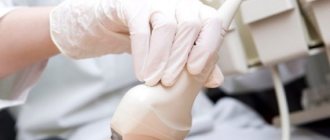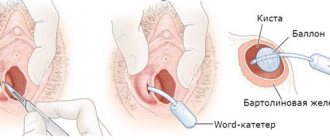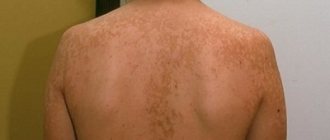Lipoma is painless lumps or tubercles, called wen, since by their nature they are benign neoplasms from adipose tissue. Sometimes they are enclosed in a capsule of connective tissue.
Lipomatosis is multiple tumors on the body that require mandatory consultation with a surgeon.
The Miracle Doctor clinic uses a modern method of removing lipomatosis, which is much more effective than the laser and radio wave method.
Causes of lipomatosis development
The etiology of lipomatosis remains unknown. There is no confirmed connection between the appearance of lipomas and bacterial, fungal or viral agents. However, the pathology occurs somewhat more often in people with hyperlipidemia, obesity (body mass index above 30) and diabetes mellitus . Presumably this is due to impaired lipid metabolism and hypertrophy of fat cells.
Other non-modifiable risk factors include gender and age . The pathology more often affects men than women. The high-risk group includes people aged 40 to 60 years, which may be due to age-related characteristics of lipid metabolism and the functioning of the immune system.
The genetic factor also plays an important role. Up to 3% of all cases develop against the background of hereditary diseases. In 65% of patients, mutations in chromosome 12q13-15 are detected, in 10% of cases doctors detect deletions of chromosome 13q, and in 25% of cases we are talking about new mutations or a normal karyotype.
Lipomas can also develop against the background of certain diseases. For example, in patients with HIV who are treated with protease inhibitors, such as saquinavir, nelfinavir, fosamprenavir, etc. Protease inhibitors suppress viral replication, but at the same time reduce the content of lipids in the blood and stimulate their deposition in adipose tissue.
Degrees of pancreatic lipomatosis
Judging by lipomatosis, it can be divided into three degrees:
- The first is minor liver damage (about thirty percent of the damage to the entire organ)
- Second - up to sixty percent of the liver is affected
- Third - more than sixty percent of the entire organ is affected.
But some researchers have noticed that a lipoma located in a certain place can significantly reduce the functioning of an organ by almost half and may already fall under the first classification.
How does cutaneous lipomatosis manifest?
Cutaneous lipomatosis is manifested by the appearance of palpable subcutaneous nodes. Typically, the size of such nodes does not exceed 2-3 centimeters, but they can also reach 8-10 centimeters and are called “giant lipomas”. Lipomas can develop in any part of the body where there are fat cells. However, they most often form on the neck, shoulders, chest and torso, armpits and thighs. Less commonly, lipomas occur in parenchymal internal organs or even in bones. Neoplasms in the oral and maxillofacial areas require special attention, since they often affect the parotid salivary glands, which makes diagnosis difficult.
Soft and mobile fatty formations of small size usually do not cause any complaints. However, with rapid growth or an unfavorable location, they can affect nerve endings, blood vessels and even joints, which leads to discomfort, pain, local sensitivity disorders and paresthesias, swelling and other signs of circulatory disorders (compression syndrome). It should be noted that all symptoms are local and can easily be associated with the presence of a lipoma. Another possible problem is an aesthetic defect, since skin lipomas often develop on the face and other visible parts of the body. This causes psychological discomfort, especially in women and children.
Most fatty tumors are benign and grow slowly, but secondary changes can occur. These are atrophy (the most favorable outcome when the volume of the tumor decreases without any external intervention), fat necrosis (accompanied by redness, pain and hyperthermia) and severe hyalinization. If suspicious symptoms appear, signs of malignant transformation, or in the presence of multiple recurrent lipomas, it is better to consult a dermatologist for examination and histological evaluation of the tumors.
Diet for lipomatosis
Since lipomatosis is irreversible and it is no longer possible to cure the affected areas, you need to focus on its therapy. Diet plays an important role in this, as it helps prevent the proliferation of fat cells. The most important thing in a diet is to eat small meals. This, of course, does not apply to a diet - this is just a nutrition algorithm that will help you in many ways. Food should be taken 4 or up to 5 times a day. You should pay attention to products that are usually taken for diseases of the digestive tract (table No. 5). And, of course, the following must be excluded from the diet: fried foods, all kinds of pickles, smoked foods, spicy, sweet and alcohol.
Table No. 5 is especially good for the body, but prevents the process of obesity, and consists of easily digestible food. In order for food to taste right, you need to steam it. This is what allows you to melt from food all the fats that are not needed for your body. If you want to serve a meat dish. then you should take low-fat food, fish. Also good for such dishes are pumpkin, zucchini, potatoes, broccoli or cauliflower.
Thus, if you suspect pancreatic lipomatosis, you should consult a doctor so that the disease does not develop into a more serious form. Also, you should not self-medicate at home; you will not be able to properly create a diet for yourself. It happens that if you still avoid consuming fats, this does not give positive results. Be healthy!
What diseases can lipomatosis hide?
In most cases, doctors diagnose lipomas during an examination. To make a preliminary diagnosis, superficial palpation and visual examination are sufficient. However, lipomas occur in systemic pathologies, including:
- Familial multiple lipomatosis is characterized by numerous lipomas on the limbs and trunk. The pathology is inherited in an autosomal dominant manner and affects more than one family member over several generations. There is evidence of a connection between the disease and gastroduodenal lipomatosis, as well as refractory epilepsy and brain abnormalities.
- Benign symmetrical lipomatosis (Launois-Bansod syndrome) is characterized by the growth of symmetrical fatty tumors around the neck, arms and upper torso. In severe cases, this leads to limited neck mobility and pain. The condition is thought to be associated with mitochondrial DNA mutations, male gender and alcohol abuse. Patients with multiple symmetrical lipomatosis often require surgical treatment due to the number and location of lipomas.
- Adiposis dolorosa is characterized by numerous lipomas or folds of fatty tissue that cause pain or a burning sensation. The pathology often occurs in overweight women aged 35 to 50 years. Adiposalgia significantly affects the quality of life and requires combination therapy. Adiposis dolorosa is often accompanied by seizures, depression, migraines, tachycardia and other symptoms.
That is why the final diagnosis is made only based on the results of laboratory and instrumental studies, including genetic ones. Specialized clinics in Germany, Switzerland, Israel and other countries with high rates of medical care use the following diagnostic procedures:
- Biopsy. Histological examination of a conventional lipoma reveals normal adipocytes that are similar to the adipocytes of subcutaneous fat. Mixed histologic types of lipomas include adenolipoma (contains sweat glands), angiolipoleiomyoma (contains blood vessels and smooth muscle cells), angiolipoma (with many blood vessels), chondroid lipoma (contains cartilage cells), and neurofibrolipoma (affects nerve endings).
- Ultrasound examination to evaluate the internal structure of superficial fatty tumors.
- MRI or CT to evaluate the internal structure of fatty tumors that are located deeper than the subcutaneous fat.
Thanks to the high accuracy of diagnostic tests, treatment in Switzerland and Germany provides high efficiency and good cosmetic results. Additionally, genetic tests may be performed to assess the risk of genetic inheritance or neoplastic transformation of tumors. Typically, benign lipomas do not express MDM2, CDK4, and p16.
Which treatment method will be most effective?
Doctors begin to develop a treatment regimen only after making a final diagnosis based on the results of reliable diagnostic studies. Regardless of histological type, lipomas never regress on their own. Advanced medical institutions in leading countries around the world offer a wide range of traditional and invasive treatment methods.
Steroid use . Ointments and creams with topical corticosteroids reduce the size of lipomas due to their anti-inflammatory and immunosuppressive effects. This sounds paradoxical, since long-term use of moderate and high doses of oral corticosteroids can lead to the development of steroid lipomatosis. Due to their mild effect, steroids are mainly recommended for patients with relatively small and asymptomatic lipomas.
Liposuction is a procedure for directly removing fat tissue from a lipoma using a needle and syringe. The intervention is similar to a simple injection and does not require anesthesia. Liposuction rarely develops complications, but it has a relatively high recurrence rate.
Collagenase injections (commercial name XIAFLEX) involve injecting the drug directly into the tumor. Collagenase dissolves its main structural component, that is, fat, and further breaks down collagen fibers. The fat inside a lipoma is similar in structure to normal adipose tissue, except that it is enclosed in a fibrous capsule. Thus, XIAFLEX affects the entire lipoma, significantly reducing the size of the tumor or completely eliminating it. Depending on the clinical situation, the doctor selects the required dosage of the drug. The dosage range varies from 0.058 mg to 0.44 mg per injection.
Deoxycholic acid injections (commercial name ATX-101) aim to emulsify (i.e. break down) fat and lipid compounds. Similar to XIAFLEX, deoxycholic acid injections are suitable for patients with large and giant lipomas, since surgical removal of such tumors is often associated with the development of bruises and scar formation. Currently, ATX-101 is primarily used in patients with fatty tumors in the neck, arms, legs, or torso. The dosage of the drug varies from 4.8 ml of a 4% solution to 4.8 ml of 1% per procedure.
Surgery . Surgical removal of lipomas is the most radical method of therapy, which leads to complete cure in 100% of patients. Surgery is indicated in cases where the fatty tumor is large or grows rapidly, causes pain, or causes functional impairment. Oncological suspicion and unclear histological type of tumor are absolute indications for surgery. The removed tissue is subject to examination with a mandatory final diagnosis. In addition, surgery may be performed for cosmetic reasons. Plastic surgery in Switzerland and other developed countries aims not only to remove tumors, but also to correct scars and soft tissue defects.
Send a request for treatment
Lipomatosis removal methods
At the Miracle Doctor clinic, the selection of treatment tactics takes into account the individual characteristics of the patient.
The choice of lipoma removal method is influenced by:
- localization;
- degree of growth;
- patient's wishes.
Different operations may be used for one patient.
Removal using classical surgical methods has given way to modern gentle methods.
The Miracle Doctor clinic uses:
- laser removal is a low-traumatic, bloodless method; the disadvantage is that each lipoma requires an individual incision;
- radio wave method – remove small lipomas up to 5 cm bloodlessly and painlessly;
- puncture-aspiration operation - performed using a special cannula attached to a vacuum aspirator. The design of the cannula allows you to remove adipose tissue with a capsule.
Treatment of dermatological diseases in the best clinics with Booking Health
To select the safest and most cost-effective treatment method, a patient with lipomatosis requires accurate diagnostic tests, as well as qualified doctors with extensive practical experience. Only a comprehensive examination can distinguish lipomatosis from more serious skin diseases. In some cases, it is more advisable for patients to turn to foreign specialists to make a correct diagnosis and carry out safe treatment.
People without experience of treatment abroad can contact ]Booking Health[/anchor], which is a certified international medical tourism operator. Along with a professional assessment of each case, Booking Health offers assistance in the following matters:
- Choosing a clinic based on specialization and treatment success rates
- Choosing a doctor and direct communication with him
- Development of a preliminary treatment program and estimation of its cost
- No surcharges or coefficients for foreign patients (save up to 50% of the initial cost of treatment)
- Make an appointment for the desired date
- Control of all stages of the medical program by our specialists
- Provision of health insurance in case of complications (coverage 200,000 euros, validity period 4 years)
- Assistance in purchasing and shipping necessary medications
- Receipt and translation of medical statements
- Control of final costing and return of unspent funds
- Organization of additional and control examinations, as well as remote consultations
- Booking hotels and air tickets, organizing transfers
- Translation services, assistance from a personal coordinator 24/7
Leave a request on our website, and a medical consultant or patient manager will contact you as soon as possible to discuss all the details in detail.
Why do wen form on the body?
Multiple wen and lumps throughout the body indicate some kind of disorder in the body. It is difficult to say exactly why they form. There are some factors that can become provocateurs:
- weakened immunity;
- poor nutrition, which contains a lot of fats, carbohydrates, and few vitamins and proteins;
- injuries;
- metabolic disorders, especially carbohydrate and fat;
- hormonal health problems;
- smoking;
- hereditary predisposition;
- regular compression of the same areas of the body.
In people over 40 years of age, the risk of developing wen increases.
Rice. 2. Wen on the body can hurt










